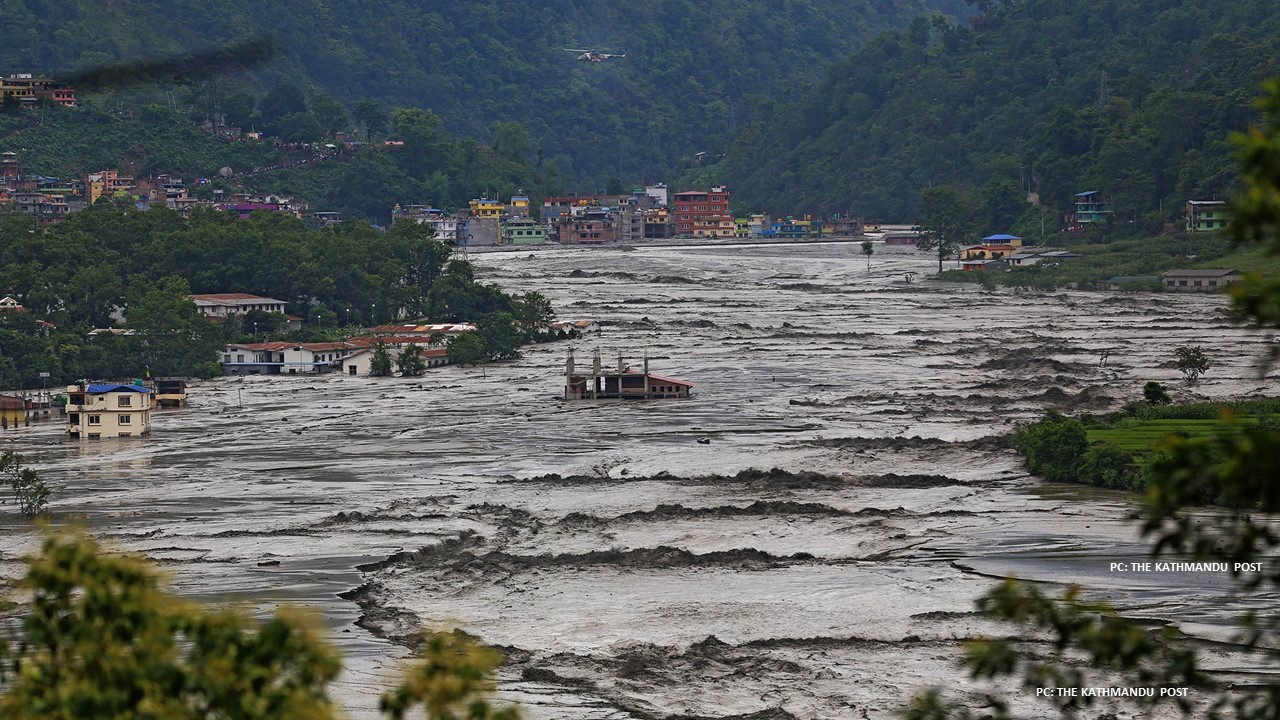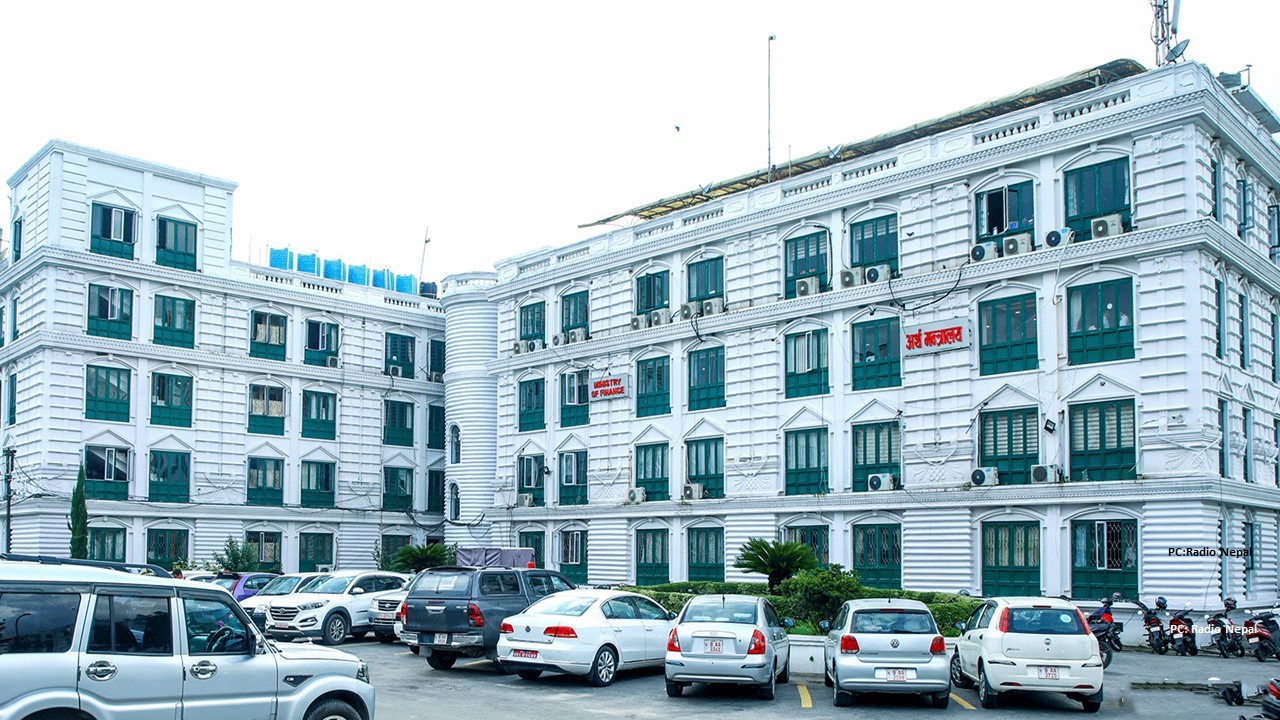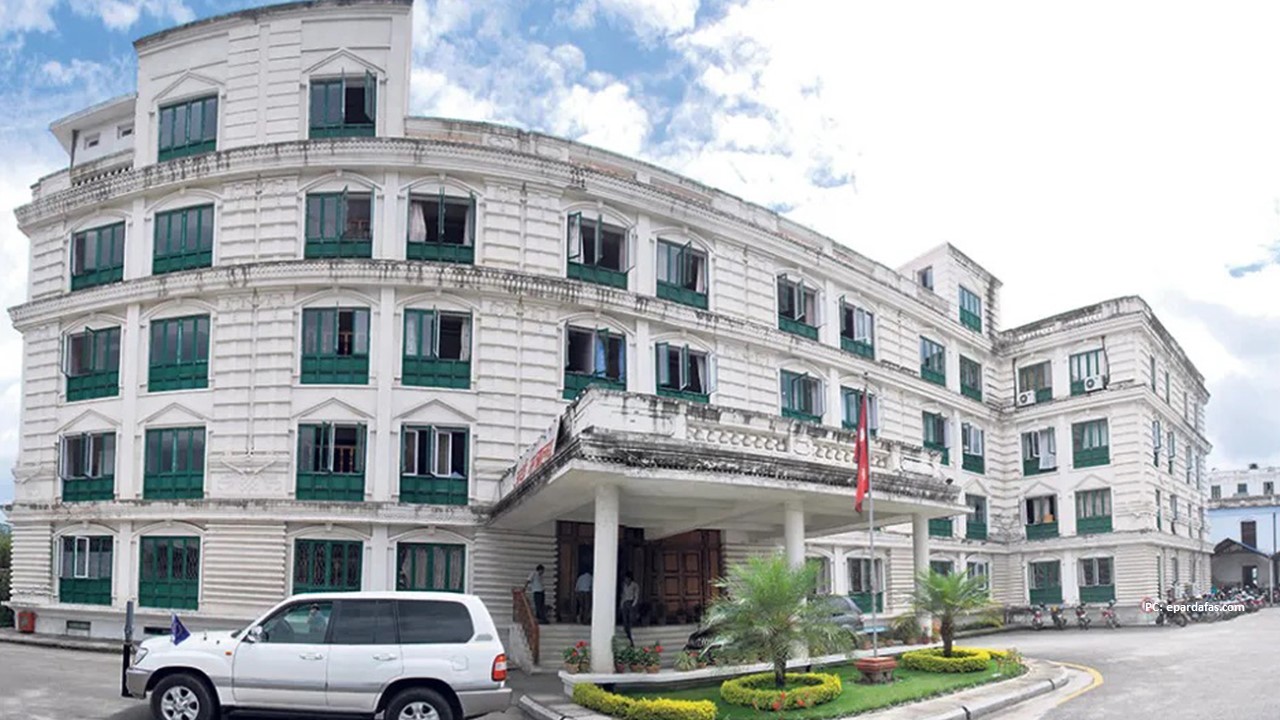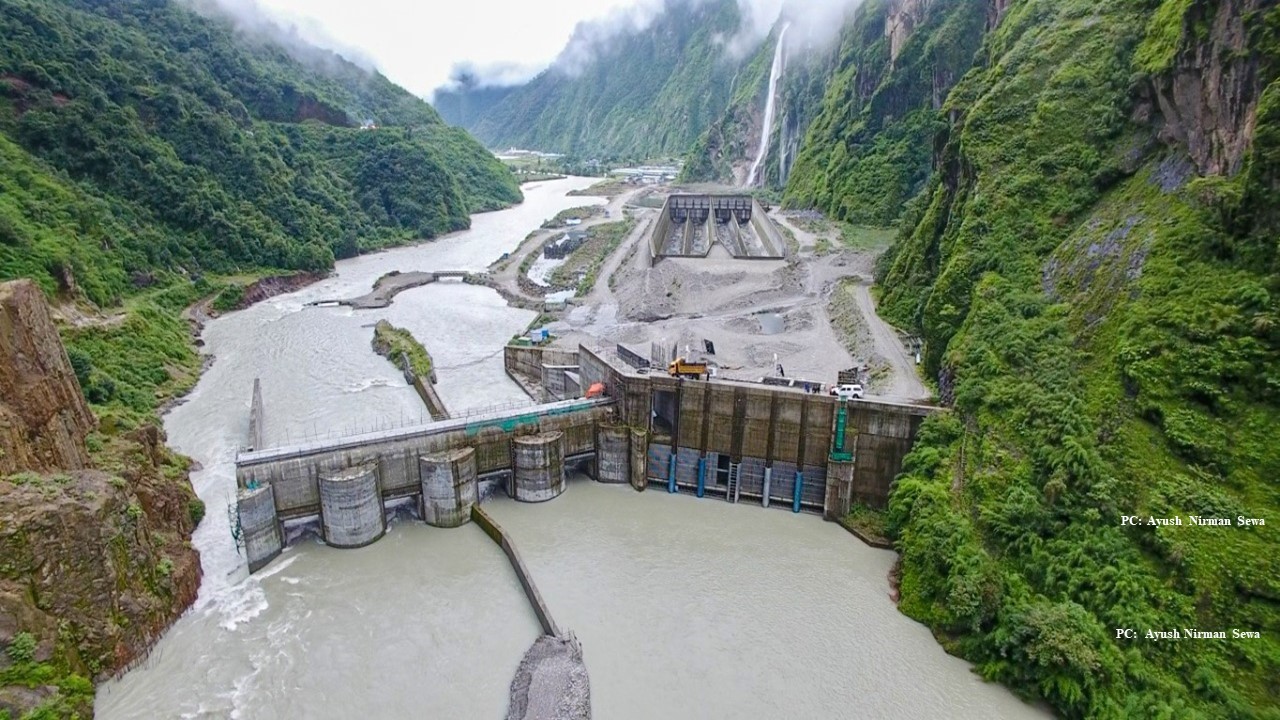Monsoon-related disasters are among the most severe natural disasters in Nepal. In the last five years, these calamities have killed 1,427 people and caused monetary damages of Rs 5.91 billion. Critical infrastructure such as bridges, roads, water supplies, and hydropower facilities have been seriously damaged, hindering development progress. In the year 2078 B.S., 52 hydropower plants were damaged by monsoon-related calamities. The Melamchi Water Supply Project was flooded that year, resulting in losses of roughly Rs 2 billion, according to the National Monsoon Preparedness and Response Plan.
Chart 1 : Human casualties in the last 5 years

Source: Report with Monsoon Events (2080), Home Ministry
This year's monsoon arrived three days early on Jestha 28th, sweeping into Nepal's eastern side. Generally, the monsoon arrives on June 13th or Jestha 31st. The eastern regions received considerable rainfall as the monsoon season began. After a brief period of calm precipitation, the intensity of rainfall increased near the conclusion of Aashad. The devastation caused by monsoon rains impacted the entire nation. 74 people died in the first month of the monsoon due to flooding, landslides, inundation, and lightning.
Disaster-Affected Area
Data from the last five years show that monsoon-related disasters do not regularly hit a single location; rather, multiple regions are affected each year. Last year's monsoon-related calamity killed 63 people and displaced 5,937 families. The eastern and central hilly regions were significantly impacted.
Chart 2 : District Hardest Hit by Floods and Landslides in the Past 5 Years

Source: Report with Monsoon Events (2080), Home Ministry
Flooding and soil erosion have devastated Koshi Province's Taplejung, Panchthar, and Sankhuwasabha, while inundation has hit Madesh Province's Rautahat and Siraha. Similarly, Gandaki's Gorkha, Tanahu, Parbat, Baglung, Lumbini, Arghakhanchi, Pyuthan, Gulmi, Karnali's Jumla, and Sudurpaschim's Baitadi have been heavily impacted by water and landslides. Thirty people have died in the Koshi districts of Taplejung, Panchthar, and Sankhuwasabha. Women and children account for the majority of fatalities.
Province-Wise Report (2080)

Source: Monsoon Preparedness and Response National Action Plan 2081, National Disaster Risk Reduction and Management Authority
According to the Monsoon Preparedness and Response National Action Plan, developed by the National Disaster Risk Reduction and Management Authority, 80 thousand families would be relocated this year as a result of monsoon-related disasters. The above-average rainfall has increased the risk of flooding, landslides, and inundation. The earthquakes in Bajhang, Doti, and Jajarkot between the months of Aashoj and Kartik have undermined the soil, putting these areas and their adjacent districts at great risk of landslides.
This year, Koshi Province's steep districts Taplejung, Panchthar, Solukhumbu, Sankhuwasabha, Bhojpur, and Dhankuta are in high danger of flooding and soil erosion. This year, over 22,000 families may be displaced in the Koshi Province. According to the Monsoon Preparedness and Response National Action Plan, the flood, landslide, and flooding will affect 20,000 people in Madesh Province, 7,000 in Bagmati Province, 5,000 in Gandaki Province, 15,500 in Lumbini Province, 5,000 in Karnali Province, and 5,500 in Sudurpaschim Province. The monsoon season lasts till the end of Aashwin in Nepal. The monsoon is expected to last 122 days this year, compared to 124 days the previous year.
Causes and Effects of Disasters
Illegal mining of river resources and uncontrolled rural road development are key causes of monsoon-related disasters. The risk of soil erosion has increased as a result of inadequate forest protection in watershed areas. According to studies, improper settlements and urbanization along riverbanks have increased human casualties during the monsoon season. The government's failure to regulate rivers, identify landslide-prone locations, and relocate settlements has exacerbated disaster-related damage.
Monsoon-induced disasters have resulted in severe loss of life and poverty among the impacted communities. The destruction of infrastructure such as roads, bridges, water supply, and hydroelectricity has deprived people of basic necessities and slowed progress. The heightened danger of disaster has accelerated migration, interrupting children's schooling, health, and overall development. The psychological trauma caused by these incidents has lowered community confidence. The possibility of infectious disease epidemics in the afflicted areas is extremely high, providing additional health risks.
Government Policies, Initiatives, and Suggestions
Article 51 of the constitution places disaster management under the purview of all levels of government. Disaster Risk Reduction National Policy 2075 intends to carry out disaster risk reduction and management operations in a balanced manner. The Water Disaster Management Policy of 2072 was implemented to reduce the impact of water-related disasters on human lives, infrastructure, and the economy. The National Disaster Risk Reduction and Management Authority was established in 2074 under the chairmanship of the Prime Minister. Even after the establishment of this authority, there has been no reduction in human catastrophes. This authority prepared a pre-monsoon disaster assessment by developing a national action plan 2081 for pre-monsoon preparation and response. Similarly, the National Action Center, which is part of the Ministry of Home Affairs, is attempting to mitigate disaster damage. The government budgeted Rs 1.12 billion for direct benefits and Rs 7.58 billion for indirect benefits related to the impact of climate change in the current fiscal year's budget. Each year, the government reduces the amount spent on environmental conservation. The 16th five-year plan seeks to boost the climate-responsive budget by 20% by fiscal year 2085/086. Based on the Sendai framework, Nepal has set short-term, medium-term, and long-term goals to reduce disaster-related deaths and infrastructure damages.
All three security services, Nepal Army, Nepal Police, and Armed Police Force, have been undertaking rescue operations through the emergency rescue service unit. A disaster management fund has been established at the local, provincial, and state levels to provide emergency rescue and relief. Aside from that, the Prime Minister's Disaster Relief Fund has been established under the direction of the Prime Minister's Office. Last year, Rs 3.21 billion in unspent funds were blocked at the end of the fiscal year. The fund has a sufficient budget, but it has not been properly utilized. The government recognizes that a lack of widespread understanding regarding disasters presents a significant difficulty in risk mitigation. The government can save money by implementing a disaster-related insurance policy. Disaster management has become more difficult due to a lack of appropriate coordination between the three levels of government. The mentality of viewing responsibility as delivering relief in the form of compensation following a disaster, rather than focusing on disaster risk prevention, has contributed to disaster management inefficiency. Settlements that have been declared dangerous by scientific analysis should be relocated immediately. Natural disaster-related damages can be mitigated when infrastructure, such as rural roads, is created with proper planning and research.









